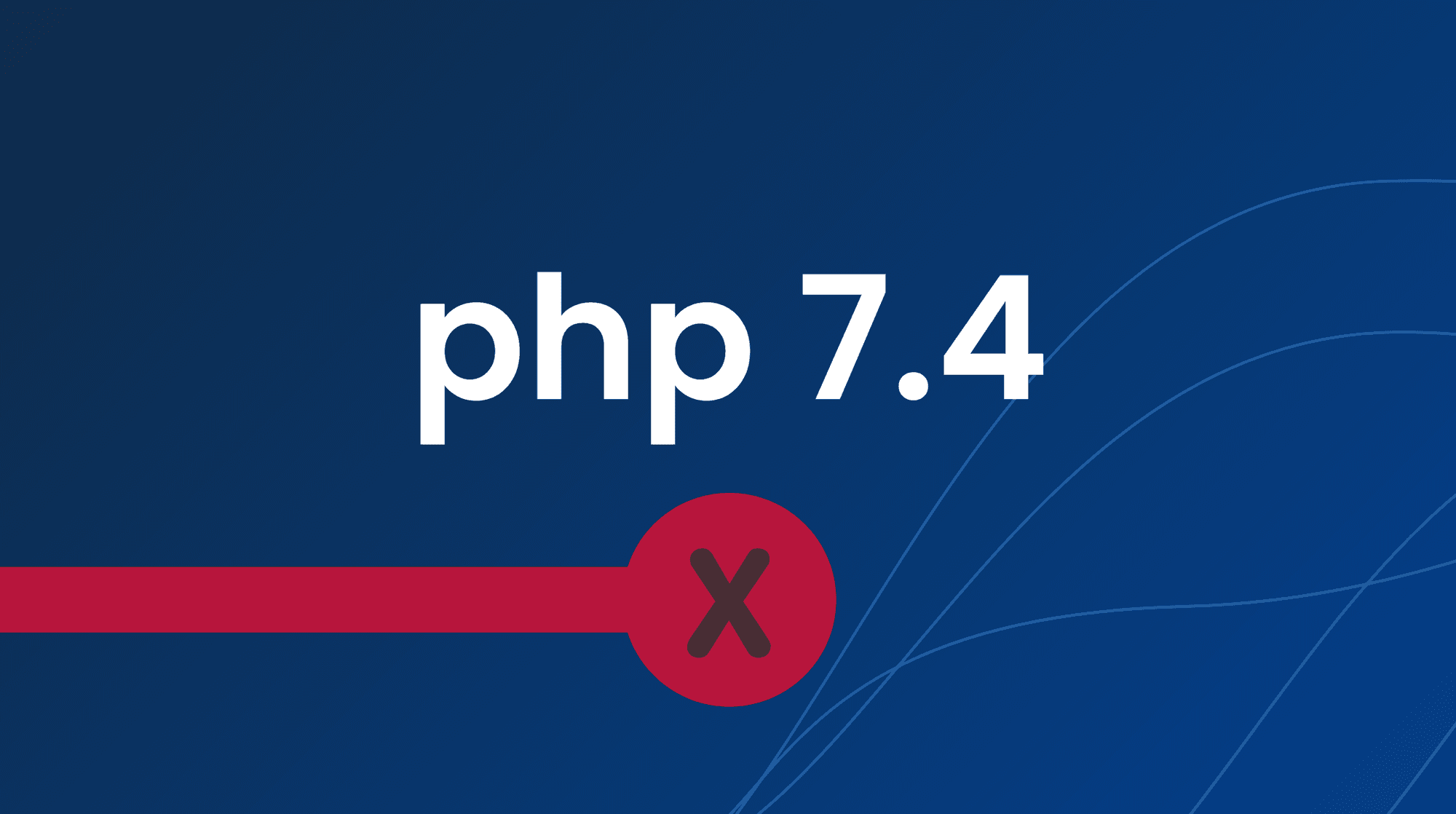在当今快节奏的数字环境中,拥有强大的在线影响力对于任何企业的成功都至关重要。而每项成功的在线业务的核心都在于有效的数字营销策略。但如果有一种方法可以增强您的数字营销工作,使其更加强大和高效,那会怎样?使用无头 WordPress,这是一种现代的 Web 开发方法,它正在彻底改变营销人员管理内容和与受众互动的方式。
🚀🌐💪
Headless WordPress 是最近在科技和营销行业中热议的一个术语。但它到底是什么意思?它是如何工作的?更重要的是,它给数字营销策略带来了什么好处?在本指南中,我们将回答所有这些问题以及更多问题,为您提供 Headless WordPress 的全面概述及其在推动数字营销成功方面的作用。
因此,系好安全带,准备探索令人兴奋的无头 WordPress 世界,在这里,性能、多功能性和用户体验至高无上。无论您是经验丰富的数字营销人员还是刚刚起步,本指南都将为您提供将营销工作推向新高度所需的知识。
让我们开始吧!
了解 Headless WordPress
Headless WordPress 因其灵活性和多功能性而迅速受到开发人员和内容创建者的欢迎。这种 WordPress 方法将前端(用户看到的内容)与后端(内容存储和管理的位置)分开,从而提供更加模块化和可定制的网站体验。
Headless WordPress 的定义
简单来说,Headless WordPress 是指使用 WordPress 后端来管理内容和数据,同时依靠单独的前端系统向用户显示内容。与传统的 WordPress 网站(前端和后端紧密集成)不同,Headless WordPress 将这些组件分离,从而提供更大的灵活性和对用户体验的控制。
借助 Headless WordPress,开发人员可以自由选择自己喜欢的前端技术,无论是 React 或 Vue.js 等 JavaScript 框架、移动应用程序,还是数字标牌显示器。这种方法为创建独特且引人入胜的 Web 体验开辟了无限的可能性。
Headless WordPress 的工作原理
为了了解 Headless WordPress 的工作原理,让我们将其与传统的 WordPress 设置进行比较。在传统的 WordPress 网站中,前端和后端紧密相连,后端负责生成 HTML 并将其直接传送到用户的浏览器。这限制了开发人员可用的灵活性和自定义选项。
在 Headless WordPress 设置中,WordPress 后端仅用于内容管理。当用户访问 Headless WordPress 网站时,前端会从 WordPress API(应用程序编程接口)请求数据并使用它来显示内容。这种关注点分离允许更好地控制用户界面,并使开发人员能够充分利用现代前端技术的全部功能。
Headless WordPress 的好处
在你的网站上使用 Headless WordPress 有几个主要好处:
- 灵活性: 使用 Headless WordPress,您可以自由选择最适合您需求和偏好的前端技术,无论是单页应用程序、移动应用程序还是任何其他定制体验。
- 性能改进: 通过分离前端和后端,Headless WordPress 可以提供更快的加载时间和更高的性能。通过前端系统处理内容的渲染和显示,服务器负载减少,从而带来更流畅的用户体验。
- 增强的安全性: 分离前端和后端可减少网站的攻击面,因为前端系统无法直接访问 WordPress 数据库。这有助于减轻安全风险和漏洞。
- 面向未来: Headless WordPress 可实现未来的可扩展性和适应性。随着新前端技术的出现,您可以轻松地将其切换或集成到您的网站中,而无需迁移您的内容。
- 内容可重用性: 使用 WordPress API,您可以轻松地在多个平台和渠道上重复使用您的内容。这意味着您可以在网站、移动应用、社交媒体渠道等上创建一致的品牌体验。
总之,Headless WordPress 为开发人员和内容创建者提供了一种现代而灵活的网站构建方法。通过分离前端和后端,它为定制、性能优化和内容可重用性开辟了新的可能性。无论您是寻求更多用户体验控制的开发人员,还是寻求无缝内容管理系统的内容创建者,Headless WordPress 都是值得考虑的强大解决方案。
无头 WordPress 在数字营销中的优点
数字营销已成为任何成功商业战略的重要方面。随着数字环境的不断发展,保持领先地位并利用可以为您带来竞争优势的技术至关重要。近年来越来越受欢迎的一项技术就是 Headless WordPress。在本文中,我们将探讨 Headless WordPress 在数字营销中的各种优点以及它如何使企业受益。
🚀 增强网站性能和速度
网站性能和速度是影响用户体验和最终转化率的关键因素。加载时间过长会让访问者感到沮丧,他们更有可能放弃您的网站并寻找您的竞争对手。
使用 Headless WordPress,您可以将网站的前端或“头部”与后端或“主体”分开。通过这样做,您可以独立优化每个组件,从而提高网站的性能和速度。方法如下:
- 微服务架构: Headless WordPress 可让您分离前端和后端,从而让您能够使用微服务架构构建网站。这意味着您网站的每个组件都可以单独开发和维护,从而实现更大的灵活性和可扩展性。
- 轻量级前端: 由于您不再受传统 WordPress 主题的限制,因此您可以使用 React、Vue.js 或 Angular 等现代技术开发轻量级前端。这些框架以其速度和效率而闻名,可确保您的网站即使在移动设备上也能快速加载。
- 内容分发网络 (CDN): Headless WordPress 的另一个优势是能够利用内容分发网络 (CDN) 将您网站的资产分发到全球多个服务器上。CDN 可确保您的网站从最靠近用户所在地的服务器交付给用户,从而减少延迟并进一步提高网站速度。
😃 改善用户体验
在当今的数字环境中,用户体验至关重要。无缝且引人入胜的用户体验有助于建立品牌忠诚度、提高转化率并提高客户满意度。Headless WordPress 提供了多种可以增强整体用户体验的功能:
- 交互式前端: 通过自由构建自定义前端,您可以创建能引起目标受众共鸣的交互式个性化用户界面。无论是集成聊天机器人、交互式表单还是动态内容,Headless WordPress 都能让您提供超越传统网站限制的用户体验。
- 跨平台兼容性: Headless WordPress 可让您使用相同的后端内容创建移动应用程序、渐进式 Web 应用程序 (PWA) 或任何其他特定于平台的界面。这可确保在不同设备上获得一致的用户体验,并提高受众的可访问性。
- 改善移动体验: 随着移动设备使用率的不断上升,优化您的网站以适应移动设备至关重要。Headless WordPress 利用响应式设计原则和移动特定功能,让您更轻松地打造移动优先体验。
🔧 可扩展性
规模是任何成功的数字营销策略的基本方面。无论您是成长中的初创公司还是成熟的企业,扩展网站和处理增加的流量的能力都至关重要。Headless WordPress 提供可扩展性优势,例如:
- 并发内容管理: 借助 Headless WordPress 的解耦架构,您的营销团队可以创建内容和管理更新,而不会影响前端或遇到任何停机时间。这可以实现更高效的工作流程并确保为您的用户提供无缝体验。
- 无服务器基础设施: Headless WordPress 可以托管在无服务器基础设施上,例如 AWS Lambda 或 Google Cloud Functions。此架构会根据需求自动扩展,让您的网站能够处理突然的流量高峰,而不会出现任何性能问题或额外的基础设施成本。
🔒 安全
安全是任何网站所有者的首要关注点。通过分离前端和后端,Headless WordPress 提供了额外的安全优势:
- 减少攻击面: 使用 Headless WordPress,攻击面显著减少,因为前端的潜在漏洞不会直接影响后端。这种分离为您的网站增加了额外的安全层。
- 增强身份验证: 使用 Headless WordPress 可以更轻松地实现 OAuth 或 JWT(JSON Web 令牌)等身份验证协议,确保安全访问您网站的内容。
📈 SEO 优势
搜索引擎优化 (SEO) 在推动自然流量和提高网站在搜索引擎结果中的可见性方面起着至关重要的作用。Headless WordPress 提供了多种 SEO 优势,包括:
- 更快的加载时间: 无头网站改进的网站性能和速度有助于提高 SEO 排名。搜索引擎优先考虑快速加载的网站,因此拥有无头架构可以为您带来优势。
- 结构化数据标记: 使用 Headless WordPress,您可以更好地控制网站数据的结构和组织。您可以轻松实现 schema.org 标记,这有助于搜索引擎更好地理解您的内容并显示丰富的搜索结果。
- 移动优化: 如前所述,Headless WordPress 可让您创建移动优先的体验。针对移动设备优化的网站往往在搜索引擎结果中排名较高,从而增加了您吸引自然流量的机会。
总之,Headless WordPress 为数字营销人员提供了许多好处。从增强的网站性能和速度到改善的用户体验、可扩展性、安全性和 SEO 优势,这种现代化的网站开发方法可以让企业在不断发展的数字环境中获得竞争优势。
内容在数字营销成功中的作用
随着数字营销在当今商业环境中的重要性日益增加,品牌必须了解内容在实现营销成功方面发挥的关键作用。在消费者不断受到信息轰炸的世界中,创建、优化和推广高质量内容已变得至关重要。
内容创作:与观众建立联系
有效的内容创作不仅仅是大量发布博客文章或社交媒体更新。它还涉及制作有价值、引人入胜且相关的内容,以引起目标受众的共鸣。通过了解他们的痛点、愿望和偏好,您可以定制内容,为他们提供所需的信息和解决方案。
创建内容时,请考虑以下事项:
- 研究:进行彻底的研究,找出与您所在行业相关的热门话题和关键词。通过了解您的受众正在搜索的内容,您可以将您的品牌定位为值得信赖的信息来源。
- 评书:通过讲故事吸引观众。分享现实生活中的例子、趣闻轶事和个人经历,让您的内容具有可读性且令人难忘。
- 种类:混合内容格式,以满足不同的学习风格和偏好。结合视频、信息图表、播客和互动元素,让您的受众保持参与。
内容优化:让您的内容可被发现
创作优质内容只是第一步。为了最大限度地发挥其影响力,您的内容需要能够被搜索引擎发现,并且与用户的搜索查询相关。这就是内容优化发挥作用的地方。
以下是内容优化的一些关键方面:
- 关键词研究:识别相关关键词并将其自然地融入到您的内容中,以提高搜索引擎的可见性。
- 元数据优化:制作引人注目的元标题和描述,吸引用户点击您的内容。
- 内部和外部链接:使用内部链接引导用户访问您网站上的相关内容,从而提升他们的整体体验。此外,请添加指向支持您内容的知名来源的权威外部链接。
内容推广:扩大影响力
创造出色的内容只是成功的一半;另一半是将其呈现在目标受众面前。内容推广涉及利用各种渠道来扩大内容的覆盖面并产生参与度。
考虑以下内容推广策略:
- 社交媒体:利用社交媒体平台的力量分享您的内容并鼓励参与。与您的受众互动,回复评论,培养社区意识。
- 电子邮件营销:建立电子邮件列表并定期向您的订阅者发送精选内容。这有助于培养关系并让您的品牌保持领先地位。
- 影响力合作:与有影响力的人或行业专家合作,向他们各自的受众推广您的内容。他们的认可可以大大扩大您的影响力和可信度。
通过认识到内容创建、优化和推广的重要性,企业可以为数字营销成功做好准备。如果做得好,高质量的内容有可能吸引、吸引和转化客户,最终推动业务增长。因此,投资创建引人入胜的内容来吸引您的受众,针对搜索引擎进行优化,并有效地推广它,以确保您的数字营销工作发挥最大潜力。🚀
无头 WordPress 如何有利于数字营销策略
Headless WordPress 正在彻底改变数字营销领域,提供众多优势,可提高任何在线营销策略的成功率。通过分离网站的前端和后端,Headless WordPress 提供了灵活性、可扩展性和与其他平台的无缝集成。让我们来探索 Headless WordPress 为数字营销带来的一些关键优势:
与其他平台集成
Headless WordPress 的主要优势之一是它能够与其他平台无缝集成。这意味着您可以轻松地将基于 WordPress 的网站与各种工具和服务连接起来,以优化您的数字营销工作。无论是与 CRM 系统集成以捕获潜在客户,连接到电子邮件营销平台以进行自动化营销,还是与社交媒体管理工具集成以进行更好的社交媒体营销,Headless WordPress 都允许您创建一个统一的生态系统,从而增强您的营销能力。
促进多渠道营销
在当今的数字环境中,通过多种渠道接触客户对于成功的营销策略至关重要。Headless WordPress 允许您轻松创建和管理可分发到各种渠道(例如网站、移动应用程序、物联网设备等)的内容。使用 Headless 方法,您可以轻松定制内容以适应不同的渠道和设备,确保在所有接触点上获得一致的用户体验。这种灵活性使您能够与受众互动,无论他们身在何处,并提供个性化的营销体验。
扩大覆盖范围
对于传统的 WordPress 网站,由于主题和插件的限制,针对搜索引擎进行优化可能具有挑战性。然而,Headless WordPress 为更好的 SEO 实施开辟了可能性。通过分离前端和后端,开发人员可以构建针对搜索引擎优化的自定义前端体验,从而提高搜索排名并增加自然流量。此外,Headless WordPress 允许快速高效地交付内容,减少加载时间并增强用户体验,从而对搜索排名产生积极影响。
推动参与
引人入胜且互动性强的内容是吸引和留住观众注意力的关键。Headless WordPress 使您能够利用 React 或 Vue.js 等现代前端技术的强大功能来创建动态且互动的用户体验。从动态产品目录到沉浸式故事讲述,可能性无穷无尽。通过提供引人入胜且互动性强的内容,您可以吸引观众,鼓励他们在您的网站上花费更多时间,并最终提高参与率。
总之,Headless WordPress 改变了数字营销格局。它能够与其他平台集成,促进多渠道营销,扩大覆盖面并推动参与度,为营销人员提供了前所未有的机会来创建有影响力且成功的在线活动。通过利用 Headless WordPress 的强大功能,企业可以增强其数字营销策略并在当今的竞争环境中保持领先地位。
揭秘关于 Headless WordPress 的常见误解
复杂性和难度
无头 WordPress 经常因复杂且难以使用而声名狼藉。然而,这种看法往往是由误解和误解所导致的。实际上,使用无头架构可以非常简单,甚至比传统的 WordPress 设置具有许多优势。
🤔 关于 Headless WordPress 的复杂性有哪些常见的误解?
让我们揭穿一些常见的误解,并阐明无头 WordPress 的真正本质:
- 🛠️ 误解:设置无头 WordPress 网站很复杂。
- 🌐 误解:无头 WordPress 需要丰富的编码知识。
- 💼 误解:Headless WordPress 只适合大型或企业级项目。
与传统 WordPress 网站相比,设置无头 WordPress 网站可能需要一些额外的技术技能。然而,这远非一项极其复杂的任务。通过适当的指导和一点点探索,开发人员可以轻松掌握它。事实上,有许多在线资源和教程可以帮助简化流程。
虽然无头 WordPress 确实需要一些编码,但这并不意味着您需要成为编码天才才能使用它。借助 React 或 Angular 等用户友好的框架和库,开发人员可以利用他们现有的技能来构建强大的前端体验,而无需重新设计轮子。此外,WordPress REST API 简化了前端和无头 WordPress 后端之间的交互。
尽管无头 WordPress 已被大型企业广泛采用,但这并不意味着它只适合这些企业。无头架构提供了灵活性和可扩展性,使其适用于各种规模和复杂程度的项目。小型企业甚至个人网站都可以从简化的开发流程和改进的性能中受益。
设计限制
关于无头 WordPress 的另一个常见误解是它具有设计限制。有些人担心将前端与后端分离可能会妨碍创建视觉效果出色的网站的能力。然而,事实并非如此。
🤔 关于 Headless WordPress 的设计限制有哪些常见的误解?
让我们消除一些有关无头 WordPress 设计能力的误解:
- 🎨 误解:无头 WordPress 缺乏设计灵活性。
- 🎭 误解:Headless WordPress 限制主题和模板的使用。
- 🌈 误解:无头 WordPress 限制使用插件来增强设计。
在无头架构中,前端与后端分离,允许开发人员完全控制其网站的设计和 UI/UX 方面。通过利用现代前端框架和工具,开发人员可以根据自己的特定需求制作出视觉效果极佳的网站。关注点分离使设计师能够专注于创造引人入胜的用户体验。
与普遍看法相反,无头 WordPress 并不禁止使用主题和模板。相反,它提供了从更广泛的前端框架、库和 UI 工具包中进行选择的自由,使开发人员能够灵活地创建独特的设计解决方案。通过利用庞大的前端工具生态系统,开发人员可以轻松找到并自定义符合他们所需设计美学的主题或模板。
虽然有些插件可能不适用于无头架构,但有许多专为无头 WordPress 设计的插件和工具可以增强您网站的设计和功能。这些插件通常提供与流行前端框架的无缝集成,使开发人员能够增强他们的设计选项并向其网站添加交互元素。
缺乏支持
关于无头 WordPress 的最大担忧之一是缺乏支持。有些人担心资源、社区支持和文档的可用性。然而,这种误解是基于对无头生态系统的有限理解。
🤔 关于 Headless WordPress 缺乏支持有哪些常见的误解?
让我们来解决无头 WordPress 社区中围绕支持的误解和误解:
- 📚 误解:Headless WordPress 缺乏全面的文档和资源。
- 🗣️ 误解:无头 WordPress 社区规模很小,而且缺乏支持。
- 🌍 误解:主机和服务提供商不提供对无头 WordPress 网站的支持。
随着无头 WordPress 的日益流行,文档和资源的可用性也显著增加。有许多教程、指南和在线社区致力于帮助开发人员应对无头架构的复杂性。此外,WordPress REST API 文档提供了大量信息和示例,用于将无头 WordPress 集成到您的项目中。
相反,无头 WordPress 社区充满活力且发展迅速。来自世界各地的开发人员和爱好者积极为开源项目做出贡献,分享他们的经验,并通过论坛、Slack 频道和社交媒体提供支持。与社区互动不仅可以帮助您找到挑战的解决方案,还可以鼓励协作和交流想法。
虽然并非所有主机和服务提供商都明确宣传支持无头 WordPress,但其中许多主机和服务提供商都提供了托管无头网站所需的基础设施和工具。此外,随着无头 WordPress 的采用率不断提高,越来越多的主机提供商认识到了它的价值,并将无头 WordPress 特定的功能和支持纳入其产品中。
通过消除这些误解,我们可以更清楚地了解无头 WordPress 生态系统中的优势、功能和支持。随着对现代网络体验的需求不断增长,无头 WordPress 被证明是一种强大的解决方案,使开发人员能够创建动态、可扩展且视觉效果惊人的网站。
将 Headless WordPress 纳入您的数字营销策略
介绍
在当今的数字环境中,拥有强大而灵活的内容管理系统 (CMS) 对于有效的数字营销策略至关重要。WordPress 就是这样一种功能强大且广受欢迎的 CMS。凭借其广泛的主题、插件和自定义选项,WordPress 已成为创建精美网站和管理内容的首选平台。然而,随着技术的进步,对更现代、更灵活的方法的需求也随之出现,从而导致了无头 WordPress 的兴起。
选择正确的平台
在进入无头 WordPress 世界之前,选择符合您的数字营销目标的正确平台至关重要。以下是一些关键注意事项:
- 灵活性: 寻找一个可以轻松与其他系统和技术集成的平台。Headless WordPress 提供灵活的基础架构,让您可以将前端(用户界面)与后端(内容管理)分离,让您可以自由地进行实验和创新。
- 可扩展性: 考虑您的数字战略的未来发展。该平台是否能够处理增加的流量和内容需求?Headless WordPress 具有模块化架构,可以根据您的需求变化轻松调整和扩展。
- 开发人员友好: 选择提供足够文档、API 和开发人员支持的平台。Headless WordPress 允许开发人员使用他们喜欢的框架,使他们能够创建高度定制且功能丰富的体验。
设置无头CMS
现在您已经选择了正确的平台,是时候设置您的无头 CMS 了。以下是帮助您入门的分步过程:
- 安装 WordPress: 首先在您的服务器或所选托管服务提供商上安装最新版本的 WordPress。这将是您的无头 CMS 的基础。
- 选择无头主题: Headless WordPress 需要单独的前端框架或主题来处理用户界面。选择适合您设计要求的 Headless 主题。您可以在 WordPress 主题目录中找到一系列 Headless 主题,或者探索高级选项。
- 实现 API: 要启用无头功能,您需要设置 API 以从 WordPress CMS 获取内容并将其传送到您选择的前端技术。利用 WordPress REST API 或 WPGraphQL 等插件将内容公开给您的应用程序。
- 连接到前端: 将您的无头 CMS 连接到前端框架或技术,例如 React.js、Gatsby 或 Vue.js。这些框架将在使用 WordPress CMS 中的数据的同时处理内容的渲染和呈现。
制定内容策略
在无头 WordPress CMS 启动并运行后,是时候制定符合您的数字营销目标的内容策略了。以下是一些入门提示:
- 定义你的目标受众: 了解您的目标受众是谁以及什么样的内容能引起他们的共鸣。这将帮助您创建相关且引人入胜的内容,从而推动转化。
- 利用个性化: 利用无头 CMS 的功能,根据用户偏好、行为或人口统计来个性化内容。个性化可增强用户体验、提高参与度并提高客户忠诚度。
- 优化SEO: 实施搜索引擎优化 (SEO) 最佳实践,确保您的内容在搜索引擎结果中排名更高。利用 SEO 插件并优化元数据、标题、URL 和关键字。
- 拥抱多渠道发布: 使用无头 WordPress,您可以灵活地在多个渠道(如网站、移动应用程序、语音助手等)上发布内容。利用这些渠道覆盖更广泛的受众并提高您的品牌知名度。
衡量成功
任何数字营销策略如果不衡量其成功,都是不完整的。在评估无头 WordPress 实施的有效性时,需要考虑以下几个指标:
- 网站流量: 跟踪您网站的访问者数量并评估无头方法是否提高了可扩展性和性能。
- 参与度指标: 分析用户参与度指标,如页面停留时间、跳出率和点击率。将这些指标与您之前的 CMS 设置进行比较,以衡量改进情况。
- 转换率: 监控转化率以了解无头 WordPress 实施是否对潜在客户生成、销售或其他期望操作产生了积极影响。
- SEO排名: 跟踪内容在搜索引擎排名中的表现。使用优化的无头 CMS,您可能会看到可见性和自然流量的改善。
将无头 WordPress 纳入您的数字营销策略可以彻底改变您创建、管理和交付内容的方式。通过选择正确的平台、设置无头 CMS、制定内容策略并衡量成功,您将能够充分利用无头 WordPress 的强大功能来推动您的数字营销工作。
结论
总之,将 Headless WordPress 集成到您的数字营销策略中可以彻底改变您的在线成功。Headless WordPress 能够增强网站性能、改善用户体验并提供可扩展性和安全性,因此具有许多优势,可以提升您品牌的数字形象。此外,其 SEO 友好特性有助于您的网站在搜索引擎结果中排名更高并带来更多自然流量。
通过利用 Managed-WP 等无头 CMS 的强大功能,您可以无缝地跨不同平台和渠道创建、优化和推广您的内容,从而覆盖更广泛的受众并提高参与度。借助合适的平台、明确的内容策略和适当的成功衡量标准,您可以充分利用 Headless WordPress 并保持领先地位。
那么,还等什么呢?拥抱无头革命,利用 Managed-WP 的高级托管 WordPress 云托管平台释放数字营销战略的真正潜力。简化您的基础设施,释放您的创造力,让我们的专家团队为您提供 24/7/365 全天候问题解决支持。访问 托管-WP.com 今天就将您的数字体验提升到新的高度!✨🚀
常见问题
- 什么是 Headless WordPress?
Headless WordPress 是一种将 WordPress 网站的前端和后端分离的配置。内容管理系统 (CMS) 用于管理后端内容,而前端则使用 JavaScript 框架等独立技术构建。
- Headless WordPress 如何有利于数字营销策略?
Headless WordPress 为创建自定义和交互式用户体验提供了更大的灵活性。数字营销人员可以利用 JavaScript 框架的强大功能来构建动态界面、实现个性化、提高性能并与其他营销工具和平台无缝集成。
- 使用 Headless WordPress 会对 SEO 产生负面影响吗?
不会,使用 Headless WordPress 不会对 SEO 产生负面影响。事实上,如果正确实施,它可以增强 SEO。通过实施服务器端渲染并优化元标记、URL 和内容,Headless WordPress 网站仍然可以在搜索引擎结果页面上获得良好的排名。
- Headless WordPress 使用的一些流行 JavaScript 框架有哪些?
Headless WordPress 中使用的一些流行 JavaScript 框架是 React、Vue.js 和 Angular。这些框架允许开发人员在使用 WordPress API 中的数据的同时构建强大且交互式的前端体验。
- Headless WordPress 适合所有类型的网站吗?
Headless WordPress 适用于各种网站,包括内容驱动型网站、电子商务平台和营销网站。它提供了创建高度定制的用户体验的灵活性,并与各种营销工具和技术无缝集成。


















